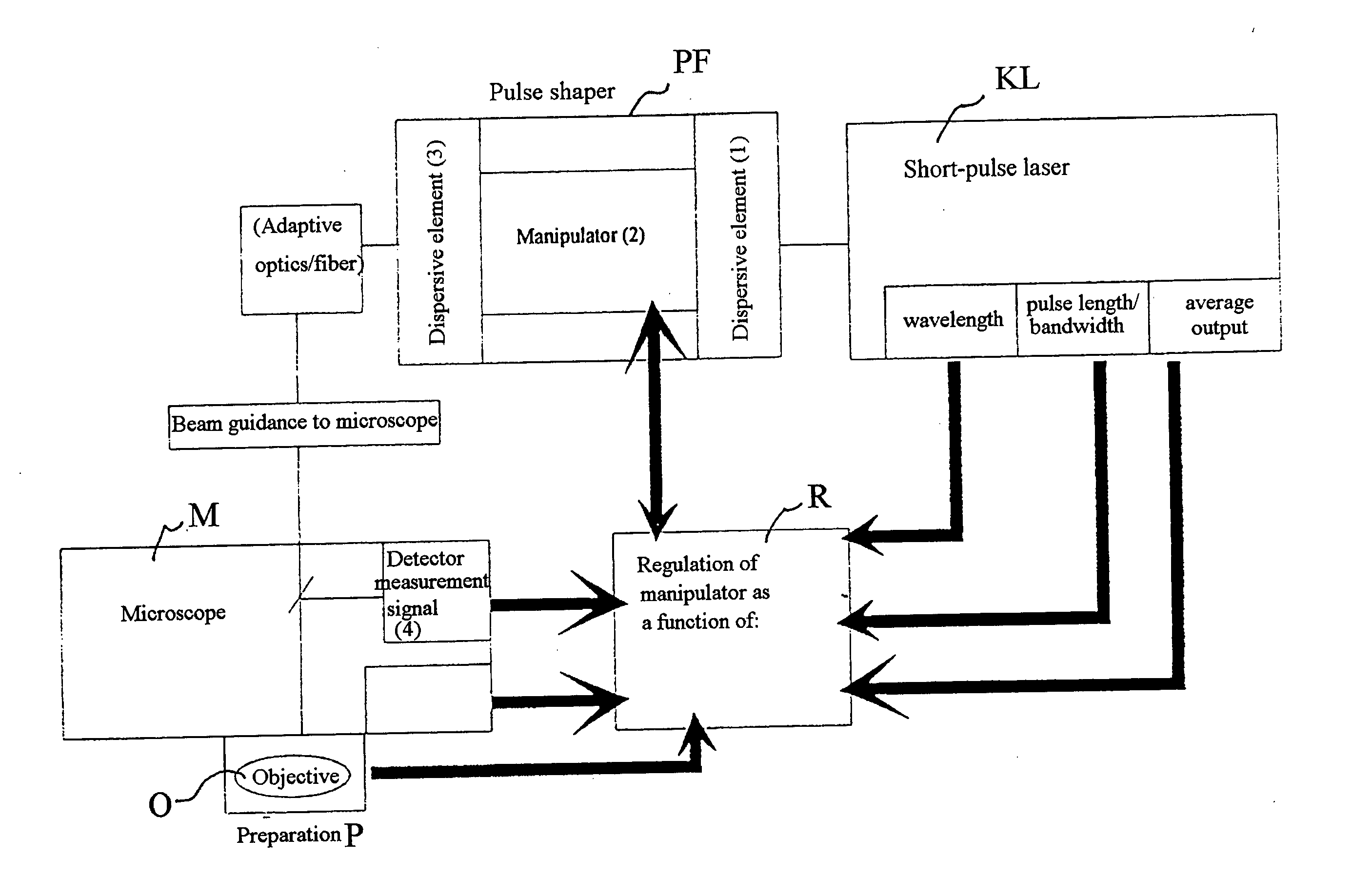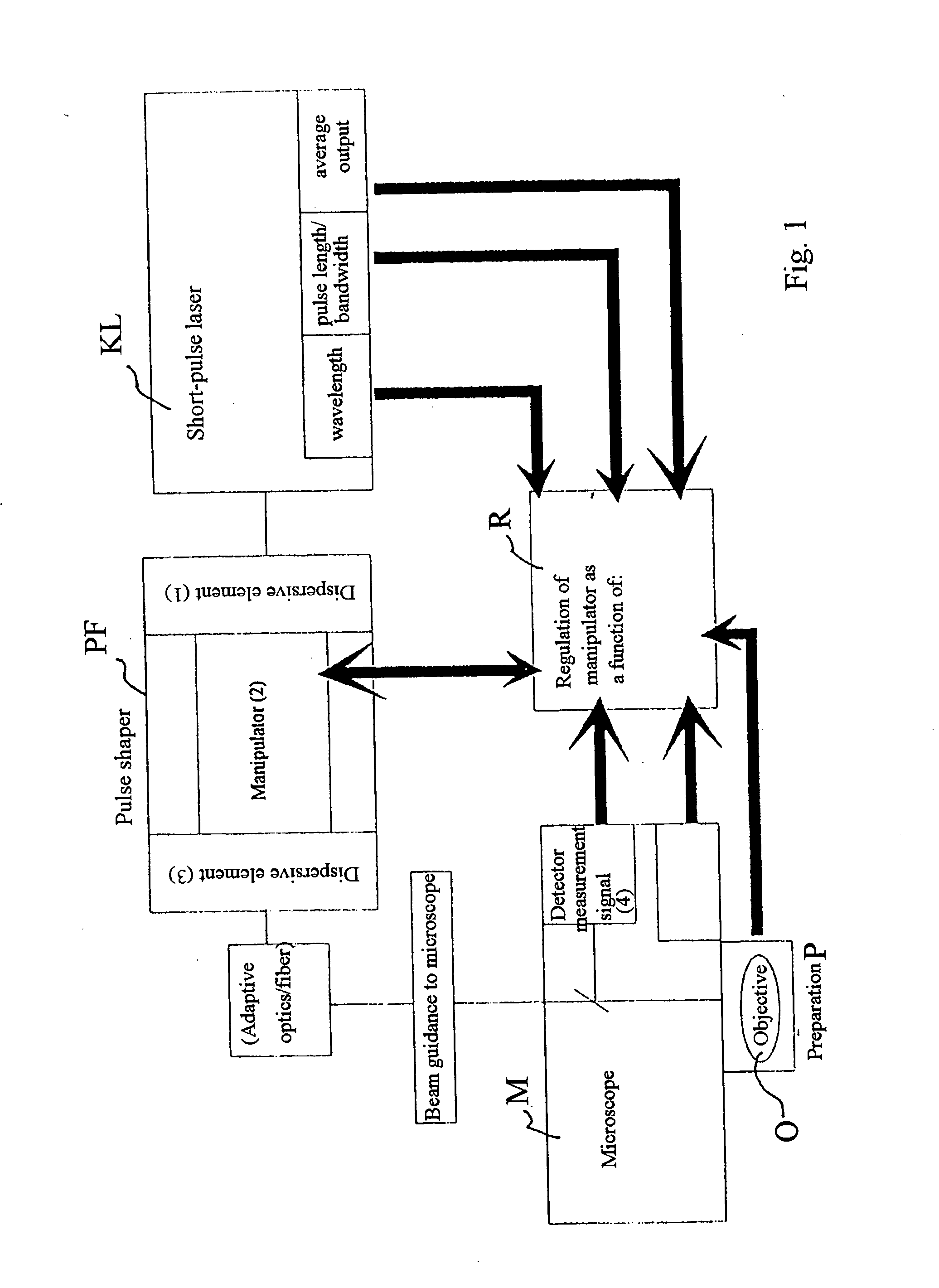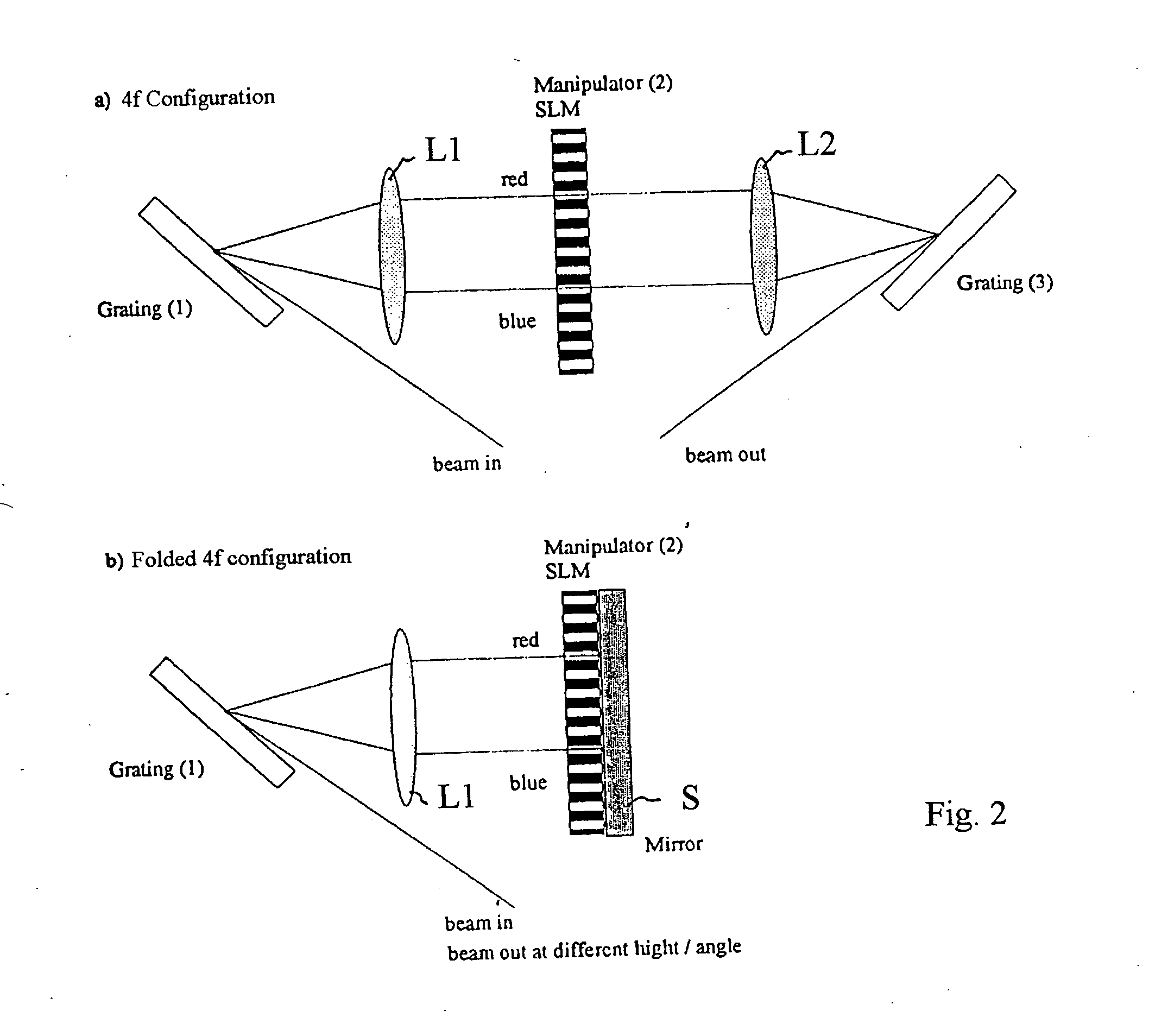Arrangement for optimizing the pulse shape in a laser scanning microscope
a laser scanning microscope and shape technology, applied in the direction of lasers, instruments, electric discharge lamps, etc., can solve the problems of inability to determine the optimal conditions for excitation of nonlinear contrasts, and the inability to create the optimal conditions by conventional techniques
- Summary
- Abstract
- Description
- Claims
- Application Information
AI Technical Summary
Benefits of technology
Problems solved by technology
Method used
Image
Examples
Embodiment Construction
The light pulses proceed from the short pulse laser KL to the pulse shaper PF. The latter is shown schematically in FIG. 2a. In the pulse shaper PF, the incident beam (beam in) is spatially split into the spectral components of the light pulses in a first dispersive element (1) comprising, e.g., a grating or prisms. A Fourier plane is then generated by means of an achromatically corrected lens or lens group L1 (FIG. 2).
This plane (focal plane) is characterized in that the individual spectral components of the light pulses are spatially separated. Considered mathematically, the transformation into this plane corresponds to a Fourier transform. In this plane, a spatial light modulator (2) (SLM) is used in transmission. The modulator is also referred to herein as a manipulator of spectral components. Generally, it comprises a matrix of nematic liquid crystals (e.g., SLM-S160 / h, Jenoptik LOS) in helical or parallel arrangement. The transmission and phase displacement of the correspon...
PUM
| Property | Measurement | Unit |
|---|---|---|
| laser scanning microscope | aaaaa | aaaaa |
| phase modulation | aaaaa | aaaaa |
| higher-order dispersion | aaaaa | aaaaa |
Abstract
Description
Claims
Application Information
 Login to View More
Login to View More - R&D
- Intellectual Property
- Life Sciences
- Materials
- Tech Scout
- Unparalleled Data Quality
- Higher Quality Content
- 60% Fewer Hallucinations
Browse by: Latest US Patents, China's latest patents, Technical Efficacy Thesaurus, Application Domain, Technology Topic, Popular Technical Reports.
© 2025 PatSnap. All rights reserved.Legal|Privacy policy|Modern Slavery Act Transparency Statement|Sitemap|About US| Contact US: help@patsnap.com



